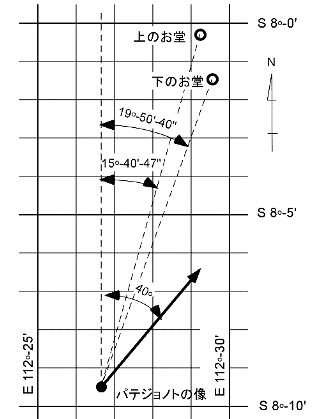| Ah, Indonesia |
| Episode 24 Pateh Jonoto (Ganesha) |
| During my duty trip to East Java, I visited
a statue of Ganesha at Desa Karang Kates,
Kec. Sumberpucung, Kab. Malang, Jatim on
October 18, 2006 which is near a guest house
of Water Service Corporation (Jasa Tirta). In 1986-87 we stay the guest house and we have visited the Ganesha during taking for a walk with our children who were still small kids. This statue, called as "Pateh Jonoto" had been respected by villagers until a few tens years ago. Numbers of villagers has reduced in parallel with spreading Islam in the village. The Ganesha has not been recognized as a national artifact, then its keeper collected found for maintain the statue. The place was so clean that we may sit down on the floor of the area. |
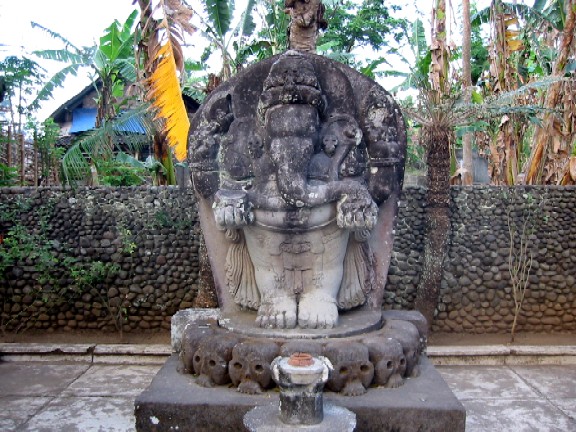 Front View |
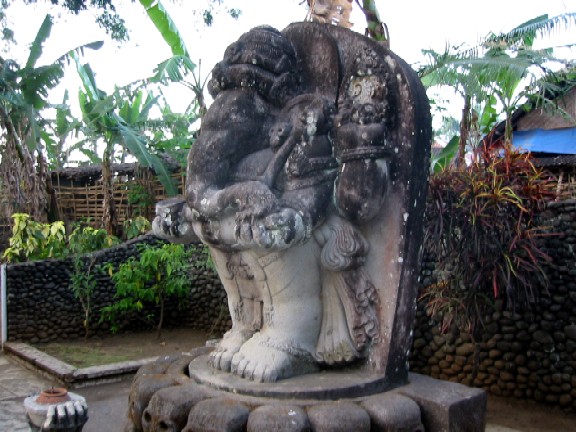 From Western side |
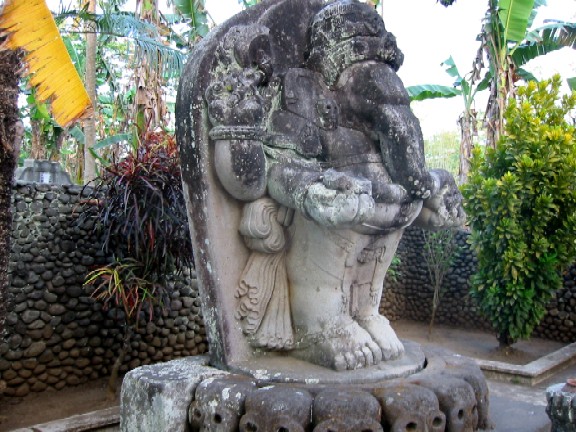 From Eastern side |
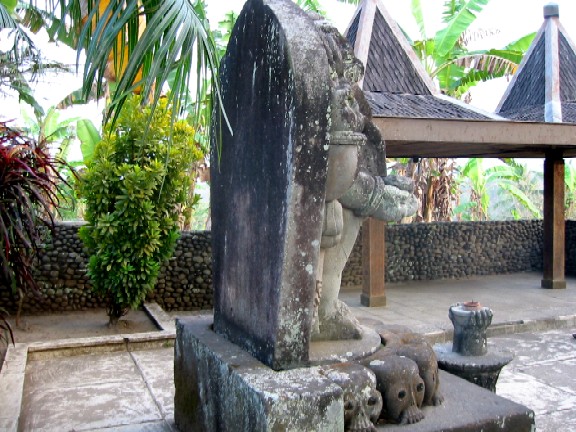 Back side |
| The keeper provided a stand for incense by
himself, but not original one. The keeper told me that the statue was not provided on grave yard but long time ago the Ganesha walked by himself and has stood this place until now. The government tried to carry the Ganesha during Dutch colonial and after independence. At these occasion, there were many troubles such as injuries of workers for this project and so one. It is peculiar that the Ganesha warped from a truck which carried the Ganesha and the Ganesha return to the original place. After this incident, the government forgave to transport the Ganesha. It is rather difficult to get protection by the government, since most of Indonesians are Muslims but not Hinduism. The ivories were taken by a mischief. Men who act mischief died suddenly after the act. Recently young policeman urinated the Ganesha swell his berry and died. After these incidents, less sightseeners visited this site and remained forgotten. The standing Ganesha is rarely found in the world. There is a big stone in front of Sutami Hydropower station is from the same kind of material of the Ganesha, the keeper told me. But it is not true, since the stone is conglomerate but the Ganesha is from sandstone During the construction stage of the powerstation in 70th, they tried to remove the stone with spherical shape with 3 m diameter, many times by dynamite or pulling by bulldozers but they failed. Still now we can see the stone in a pond. It may be the statue of model of Kalachakra, which mixed up Hindu and Buddha. The base plate with sculls has been weathered but the lower side of Ganesha is still fresh and we can see details of patterns of curving on the statue. I will report you about the Ganesha at next visit. |

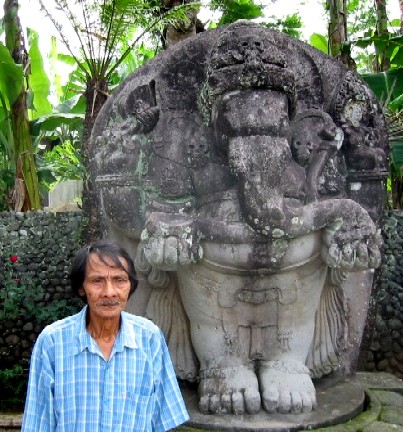 Mr. Mualim beside Pateh Jonoto
Mr. Mualim beside Pateh Jonoto